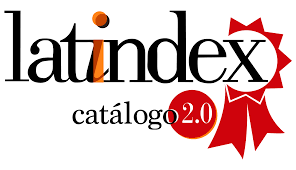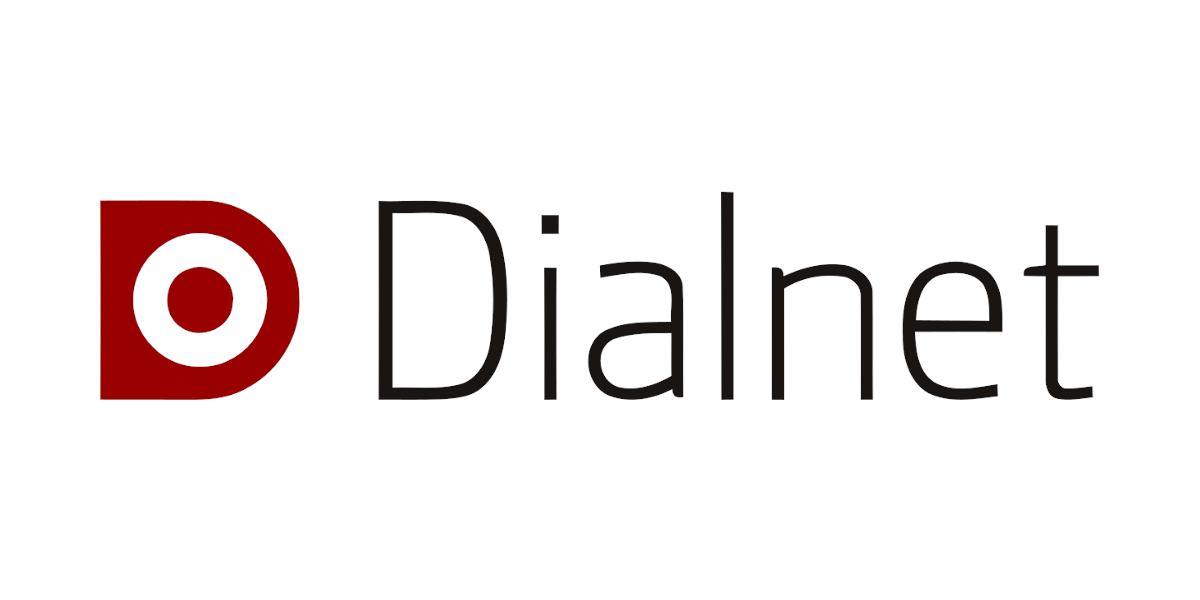Subproductos del cacao (Theobroma cacao) como alternativa para la mejora de la dieta balanceada en rumiantes
DOI:
https://doi.org/10.55996/dekamuagropec.v3i1.72Keywords:
Agricultural by-product, cocoa husk, ruminants, balanced diet, dietary supplementAbstract
Cocoa production is estimated at 4.7 million tons per year, of which 90% are waste residues, such as cocoa husks (CC). These agricultural by-products are a source of nutritional compounds of interest to the ruminant sector. Studies carried out on this matter have shown that it has a high percentage of proteins, fiber, phenols, among others, which give it nutraceutical properties. The fiber present in CC has the potential to absorb oils and cholesterol, thus reducing its bioavailability during digestion. Therefore, the objective of this research was to describe and analyze the nutritional properties of cocoa by-products in the induction of a balanced diet for ruminant animals. The analysis was performed by searching the literature review (Scopus, Scielo) during the months of April and May 2022, the guidelines of the PRISMA statement were followed and to establish the search string, the Boléan operators were used. Current evidence suggests the use of cocoa by-products as an alternative for the improvement of the balanced diet in ruminants (under relevant parameters), as a non-conventional alternative raw material in diets for the ruminant sector for its contribution in protein and fiber that helps fattening without detrimental effects on milk production performance
Downloads
References
Adeyeye, S. A., Ayodele, S. O., Oloruntola, O. D., & Agbede, J. O. (2019). Processed cocoa pod husk dietary inclusion: Effects on the performance, carcass, haematogram, biochemical indices, antioxidant enzyme and histology of the liver and kidney in broiler chicken. Bulletin of the National Research Centre, 43(1), 54. https://doi.org/10.1186/s42269-019-0096-8
Alemawor, F., Dzogbefia, V. P., Oddoye, E. O. K., & Oldham, J. H. (2009). Effect of Pleurotus ostreatus fermentation on cocoa pod husk composition: Influence of fermentation period and Mn2+ supplementation on the fermentation process. African Journal of Biotechnology, 8(9), 1950–1958. https://doi.org/10.5897/AJB09.332
Campione, A., Pauselli, M., Natalello, A., Valenti, B., Pomente, C., Avondo, M., Luciano, G., Caccamo, M., & Morbidini, L. (2021). Inclusion of cocoa by-product in the diet of dairy sheep: Effect on the fatty acid profile of ruminal content and on the composition of milk and cheese. Animal, 15(6), 100243. https://doi.org/10.1016/j.animal.2021.100243
Carta, S., Nudda, A., Cappai, M. G., Lunesu, M. F., Atzori, A. S., Battacone, G., & Pulina, G. (2020). Short communication: Cocoa husks can effectively replace soybean hulls in dairy sheep diets-Effects on milk production traits and hematological parameters. Journal of Dairy Science, 103(2), 1553–1558. https://doi.org/10.3168/jds.2019-17550
Figueiredo, M. R. P. de, Saliba, E. de O. S., Barbosa, G. S. S. C., Lopes, F. C. F., Silva, F. A. e, Silva, C. R. da M. e, Nunes, A. N., & Figueiredo, M. C. P. de. (2018). Cocoa byproduct in diets for dairy heifers. Cocoa Byproduct in Diets for Dairy Heifers, 47. https://doi.org/10.1590/rbz4720170126
Galanakis. (2015). Separation of functional macromolecules and micromolecules: From ultrafiltration to the border of nanofiltration. Trends in Food Science & Technology, 42(1), 44–63. https://doi.org/10.1016/j.tifs.2014.11.005
Godoy, D., Gonzales, J., Roque, R., Fernández, M., Gamarra, S., Hidalgo, V., & Gómez, C. (2021). Use of unconventional agro-industrial by-products for supplementation of grazing dairy cattle in the Peruvian Amazon region. Tropical Animal Health and Production, 53(2), 294. https://doi.org/10.1007/s11250-021-02718-y
Godoy Padilla, D. J., Daza La Plata, R., Fernández Curi, L. M., Layza Mendiola, A. E., Roque Alcarraz, R. E., Hidalgo Lozano, V., Gamarra Carrillo, S. G., & Gómez Bravo, C. A. (2020). Caracterización del valor nutricional de los residuos agroindustriales para la alimentación de ganado vacuno en la región de San Martín, Perú. Ciencia y Tecnología Agropecuaria, 21(2).
Hikmah, H., Alam, G., Syamsu, J. A., Salengke, S., & Nahariah, N. (2020). The digestive and physiological visceral organs of male Bali cattle were fed with cocoa bean shell. IOP Conference Series: Earth and Environmental Science, 492(1), 012063. https://doi.org/10.1088/1755-1315/492/1/012063
Laconi, E. B., & Jayanegara, A. (2015). Improving Nutritional Quality of Cocoa Pod (Theobroma cacao) through Chemical and Biological Treatments for Ruminant Feeding: In vitro and In vivo Evaluation. Asian-Australasian Journal of Animal Sciences, 28(3), 343–350. https://doi.org/10.5713/ajas.13.0798
Makinde, O. J., Okunade, S. A., Opoola, E., Sikiru, A. B., Ajide, S. O., & Elaigwu, S. (2019). Exploration of Cocoa (Theobroma cacao) By-Products as Valuable Potential Resources in Livestock Feeds and Feeding Systems. In Theobroma Cacao—Deploying Science for Sustainability of Global Cocoa Economy. IntechOpen. https://doi.org/10.5772/intechopen.87871
Mancilla-Montelongo, M. G., Castañeda-Ramírez, G. S., Gaudin-Barbier, E., Canul-Velasco, M. L., Chan-Pérez, J. I., De la Cruz-Cortazar, Á., Mathieu, C., Fourquaux, I., Sandoval-Castro, C. A., Hoste, H., Ventura-Cordero,
J., González-Pech, P. G., & Torres-Acosta, J. F. de J. (2021). In vitro Evaluation of the Nutraceutical Potential of Theobroma cacao pod Husk and Leaf Extracts for Small Ruminants. Acta Parasitologica, 66(4), 1122–1136. https://doi.org/10.1007/s11686-021-00354-y
Manis, C., Scano, P., Nudda, A., Carta, S., Pulina, G., & Caboni, P. (2021). LC-QTOF/MS Untargeted Metabolomics of Sheep Milk under Cocoa Husks Enriched Diet. Dairy, 2(1), 112–121. https://doi.org/10.3390/dairy2010011
Mariatti, F., Gunjević, V., Boffa, L., & Cravotto, G. (2021). Process intensification technologies for the recovery of valuable compounds from cocoa by-products. Innovative Food Science & Emerging Technologies, 68, 102601. https://doi.org/10.1016/j.ifset.2021.102601
Moher, D., Liberati, A., Tetzlaff, J., & Altman, D. G. (2009). Preferred Reporting Items for Systematic Reviews and Meta-Analyses: The PRISMA Statement. Annals of Internal Medicine, 151(4), 264–269. https://doi.org/10.7326/0003-4819-151-4-200908180-00135
Núñez-Torres, O. P., & Rodríguez-Barros, M. A. (2019). Subproductos agrícolas, una alternativa en la alimentación de rumiantes ante el cambio climático. Journal of the SelvaAndina Animal Science, 6(1), 24–37.
Okiyama, D. C. G., Navarro, S. L. B., & Rodrigues, C. E. C. (2017). Cocoa shell and its compounds: Applications in the food industry. Trends in Food Science & Technology, 63, 103–112. https://doi.org/10.1016/j.tifs.2017.03.007
Olugosi, O. A., Ogunribido, T., Agbede, J. O., & Ayeni, A. O. (2021). Effect of biologically upgraded cocoa pod husk meal on growth, serum and antioxidant properties of two rabbit breeds. Bulletin of the National Research Centre, 45(1), 11. https://doi.org/10.1186/s42269-020-00454-1
Omotoso, O. B. (2019). Nutritional potentials and in vitro estimation of composite cocoa pod husk-based diets for ruminants. Bulletin of the National Research Centre, 43(1), 150. https://doi.org/10.1186/s42269-019-0189-4
Page, M. J., McKenzie, J. E., Bossuyt, P. M., Boutron, I., Hoffmann, T. C., Mulrow, C. D., Shamseer, L., Tetzlaff, J. M., Akl, E. A., Brennan, S. E., Chou, R., Glanville, J., Grimshaw, J. M., Hróbjartsson, A., Lalu, M. M., Li, T., Loder, E. W., Mayo-Wilson, E., McDonald, S., ... Moher, D. (2021). Declaración PRISMA 2020: Una guía actualizada para la publicación de revisiones sistemáticas. Revista Española de Cardiología, 74(9), 790–799. https://doi.org/10.1016/j.recesp.2021.06.016
Porto de Souza Vandenberghe, L., Kley Valladares-Diestra, K., Amaro Bittencourt, G., Fátima Murawski de Mello, A., Sarmiento Vásquez, Z., Zwiercheczewski de Oliveira, P., Vinícius de Melo Pereira, G., & Ricardo Soccol, C. (2022). Added-value biomolecules’ production from cocoa pod husks: A review. Bioresource Technology, 344, 126252. https://doi.org/10.1016/j.biortech.2021.126252
Renna, M., Lussiana, C., Colonna, L., Malfatto, V. M., Mimosi, A., & Cornale, P. (2022). Inclusion of Cocoa Bean Shell in the Diet of Dairy Goats: Effects on Milk Production Performance and Milk Fatty Acid Profile. Frontiers in Veterinary Science, 9. https://www.frontiersin.org/article/10.3389/fvets.2022.848452
Smith, O. B., Osafo, E. L. K., & Adegbola, A. A. (1988). Studies on the feeding value of agro-industrial by-products: Strategies for improving the utilisation of cocoa-pod-based diets by ruminants. Animal Feed Science and Technology, 20(3), 189–201. https://doi.org/10.1016/0377-8401(88)90043-0
Vásquez, Z. S., de Carvalho Neto, D. P., Pereira, G. V. M., Vandenberghe, L. P. S., de Oliveira, P. Z., Tiburcio, P. B., Rogez, H. L. G., Góes Neto, A., & Soccol, C. R. (2019). Biotechnological approaches for cocoa waste management: A review. Waste Management, 90, 72–83. https://doi.org/10.1016/j.wasman.2019.04.030
Vera-Rodríguez, J. H., Jiménez-Murillo, W. J., Naula-Mejía, M. C., Villa-Cárdenas, U. J., Zaruma-Quito, F. A., Montecé-Maridueña, G. Y., Cabrera-Carreño, W. J., Zambrano-Valencia, F. N., & Astudillo-Ludizaca, C. M. (2021). Residuos de la producción de cacao (Theobroma cacao L.) como alternativa alimenticia para rumiantes. Revista Colombiana de Ciencia Animal -RECIA, 13(2), e839–e839. https://doi.org/10.24188/recia.v13.n2.2021.839
Published
How to Cite
Issue
Section
License
Copyright (c) 2022 Dékamu Agropec Scientific Journal

This work is licensed under a Creative Commons Attribution-NonCommercial 4.0 International License.
Los autores que publican en esta revista aceptan los siguientes términos:
- Los autores conservan los derechos de autor y conceden a la revista el derecho publicación con la obra, simultáneamente licenciada bajo una licencia de Creative Commons CC By que permite a otros compartir el trabajo, pero citando la publicación inicial en esta revista.
- Los autores pueden celebrar acuerdos contractuales adicionales separados para la distribución no exclusiva de la versión publicada de la obra de la revista (por ejemplo, publicarla en un repositorio institucional o publicarla en un libro), pero citando la publicación inicial en esta revista.
- Se permite y anima a los autores a publicar su trabajo en línea (por ejemplo, en repositorios institucionales o en su sitio web) antes y durante el proceso de presentación, ya que puede conducir a intercambios productivos, así como una mayor citación del trabajo publicado (https://web-archive.southampton.ac.uk/opcit.eprints.org/oacitation-biblio.html)















